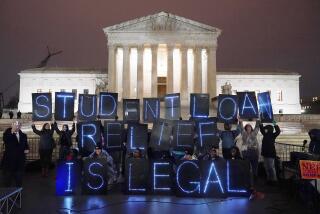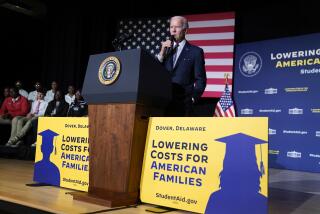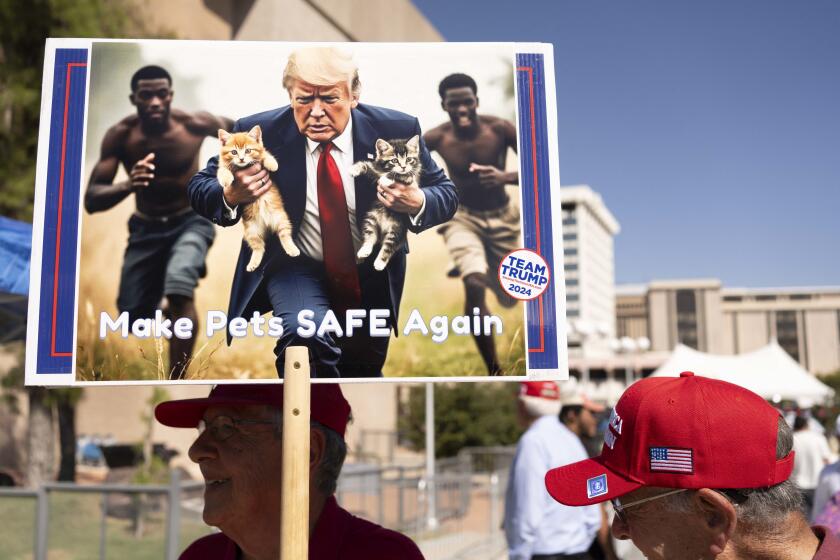A student loan stopgap
With just days to go before the clock runs out, Congress appears ready to forge a reasonable compromise to keep interest rates low on federally subsidized college loans for the coming year. Without action, the rates would double from 3.4% to 6.8% on July 1.
Under the compromise, Congress would keep the interest rates at their current level, raising much of the $6 billion it would cost to fill the gap by charging companies more to insure their pension programs, with proceeds to go toward the student loans. In addition, loan requirements would be toughened slightly by cutting off eligibility for students when they take more than six years to earn a bachelor’s degree.
There are other steps Congress could reasonably take to keep rates low while minimizing federal spending. It might make sense to allow a small increase in the rate to go forward. A 1-percentage-point increase would cost students less than $1,500 over the life of the loan, for example, even if they borrowed the maximum allowed under the program. Advocates of the low-cost loan program have made it sound as though any rate higher than 3.4% is unthinkable, but in fact the rate has been that low only for this past academic year; the year before, it was 4.5%, and no one was complaining that the rate was exorbitant.
Everyone is familiar with the stories of graduates coming out of college burdened by crushing $100,000 debts. But federally subsidized loans represent only a small proportion of all college loans. The top amount that can be borrowed is $23,000, and most students take considerably less. The savings generated by keeping rates low are easily wiped out by rapidly rising tuition rates.
Congress may have bought some time for college students, but rather than wait another year for another last-minute legislative jam, it should begin to address the underlying issue of college affordability. Perhaps colleges that want to qualify for the program should have to justify price increases that exceed the cost of living. Congress is also entitled to information about whether colleges are using their financial aid dollars effectively, by giving them to genuinely needy applicants rather than to compete for star students.
Above all, Congress should be cracking down on college programs that have become virtual machines of loan default. A relatively small number of loans go to students attending for-profit colleges, but those tend to be for the largest amounts and represent a grossly disproportionate number of eventual defaults, because many of the programs often do not effectively prepare students for careers. Congress should consider restricting subsidized loans to programs with reasonable default rates; the nation should not invest in bad loans and ineffective educational institutions.
More to Read
A cure for the common opinion
Get thought-provoking perspectives with our weekly newsletter.
You may occasionally receive promotional content from the Los Angeles Times.










